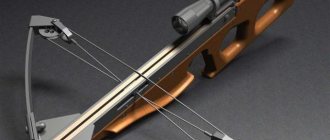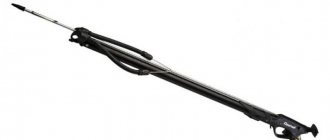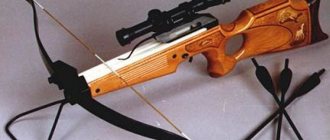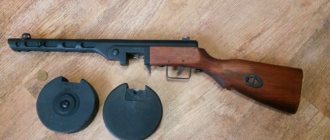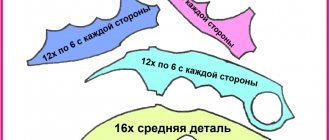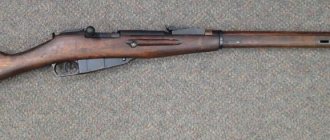Car GAZ-69. Basic model with two doors and an eight-seater body with a canvas top. The traditionally poor condition of Russian roads was one of the reasons that excellent all-terrain vehicles were created in the USSR. Some of them were used only in the most remote corners of the country, however, there were also ubiquitous off-road vehicles. Perhaps the most famous among them was the GAZ 69 in the first post-war decades. This car was used in the city and in villages, in the army and in civilian life, in the fire and medical services, it could be seen at airfields and in pioneer camps. Having mastered many professions, the GAZ-69 fully justified the name “Worker” assigned to it by its designers, but in history it remained under the more frivolous nickname “Kozlik”.
History of creation
On June 19, 1945, a show of two new cars created at the Gorky Automobile Plant took place in the Moscow Kremlin. The first of them was the later widely known GAZ-51 truck, the second was the no less famous “Pobeda”, GAZ M-20. Telling I.V. To Stalin about these machines, GAZ chief designer Lipgart noted that the development of another new product, which he simply called a “tractor,” would soon be completed. Oddly enough, this short phrase from Lipgart became the first public mention of the future GAZ-69 all-terrain vehicle.
At that time, the Red Army was still saturated with various American cars received under Lend-Lease, primarily Willys. They were gradually replaced by the Soviet GAZ-67 - a simple and reliable car, very popular among the troops. But this first Gorky jeep had a very serious drawback, which no modernization could correct: it was too small and not roomy enough.
One of the GAZ-69 prototypes during factory testing in 1948
Therefore, back in 1944, when mass production of the GAZ-67 had just begun, one of the designers who took part in its creation, G.M. Wasserman began designing a larger and more advanced car.
When Lipgart reported about the “tractor” to Stalin, a general idea about the future of the GAZ-69 had already been formed. It should be noted that when creating all new models, GAZ designers sought to make them as unified as possible. This made it much easier to fine-tune the machines, organize mass production, and subsequent operation. The main “landmark” in the development of the GAZ-69 was the “Victory”, at the same time this jeep has a lot in common with other post-war Gorky cars, for example, the GAZ-51 and GAZ-63 trucks.
From the GAZ-67, the new all-terrain vehicle only inherited mocking nicknames - “Kozlik” and “Bobik”. Such a refusal to use accumulated experience and proven design elements may seem strange, but it can be explained quite simply: the first Soviet jeep was also unified, but with pre-war cars, which by 1945 were already outdated and were not produced. Further production of the corresponding units and components was not planned, which meant that the GAZ-67 would inevitably have to be abandoned in the coming years.
In October 1947, the first prototype of the new car was manufactured. On its side was the inscription “Worker” - the designers believed that in the future this would be the official name of the car, but this did not happen. The new product was given the factory index GAZ-69-76, and the army used the designation ATK-L, which stood for “light wheeled artillery tractor.”
GAZ-59 towing a trailer on the highway
Factory tests of the vehicle were carried out with a trailer, which in terms of weight was approximately the same as an 82-mm mortar, because in the army the vehicle had to travel with just such a load or, as an option, with a light anti-tank gun. In 1949, prototypes of the new jeep, and at that time at least three of them were manufactured, took part in the run of ZiS-151 and GAZ-63 trucks as auxiliary vehicles.
The following year, the new jeep was compared with the old one - GAZ-69 and GAZ-67B competed both on the highway and in off-road conditions. This test showed that the promising car consumes much less fuel with a noticeably higher curb weight, while the old car has slightly better cross-country ability. The military believed that the GAZ 69 did not require technical characteristics that would allow it to be driven directly on the front line, so they considered its all-terrain qualities to be quite sufficient.
It would seem that all the prerequisites were in place to begin serial production, however, politics unexpectedly intervened in the work of GAZ: a campaign against “cosmopolitanism” was launched in the country, as part of which the chief designer of the plant, Lipgart, was fired, as well as many other highly qualified engineers . As a result, the GAZ-69 appeared on the assembly line only in August 1953.
GAZ-69A - a car with a four-door, five-seater body
By this time the car had changed somewhat. In an effort to meet the requirements of military customers, the designers increased the engine power to 55 horsepower, which increased the maximum speed and weight of the vehicle. In addition, a five-door version of the jeep was developed under the designation GAZ-69-77, better known as GAZ 69A. At the same time, it was not possible to increase the ground clearance of the all-terrain vehicle, which did not fully meet the original technical specifications.
Soon after the transition to mass production, it became clear that the need for a new SUV was extremely high. In addition, interest in the car was also shown abroad. Meanwhile, the Gorky Automobile Plant could not significantly increase the production of GAZ-69, since it was already loaded with mass orders. As a result, it was decided to transfer the production of the new jeep to the Ulyanovsk Automobile Plant. At the same time, we were talking not only about the transfer of technical documentation, but also about the secondment of an entire design team to Ulyanovsk.
The first six cars under the new designation UAZ-69 were manufactured by the end of 1954, but it was still a “screwdriver assembly”. UAZ managed to establish mass production using its own components two years later. It must be said that the car was still mostly called “Gazik” or GAZ-69, ignoring the inscription on the hood.
The last such cars rolled off the assembly line in 1973. Over the 20 years of serial production, changes have been made to the design of the machine several times. In particular, the brake performance has been improved, the front axle has been replaced, and the suspension has been strengthened. On the basis of the GAZ-69, many specialized vehicles were created that successfully solved both military and peaceful tasks.
GAZ-69-68 is the latest serial modification of the SUV. The changes were mainly “internal”, but it is clear that the canvas top of the car has been modified
Engine tuning
Of course, Gazik considers the 69th a hopelessly outdated model, and only lovers of retro cars and tuning resurrect legendary cars. So, in order to tune the engine, many tuning studio specialists will say that it is worth throwing out the power unit completely. But, as practice has shown, a Russian person can do anything if he has the desire.
As in all cases, with old Soviet cars, tuning can only be done mechanically. Therefore, it is worth approaching the engine overhaul responsibly. The only nuance that stops many car enthusiasts who want to modify the engine is the lack of spare parts.
If we are talking about completely reworking the engine, then you will need a familiar turner and milling machine, since most of the internal parts will have to be machined new. The rest can be converted from the existing range of spare parts for other cars.
The modification technology is no different from other engines. Unless the valve mechanism is located at the bottom. But this is also not a problem, since in this case, the engine is similar to the power units of MTZ and GAZ-52.
Since the engine is not capable of accelerating to prohibitive speeds, there is no point in installing a tuning version of the cooling system, except perhaps for beauty.
Description of design
GAZ-69 is an all-wheel drive off-road vehicle built on a durable supporting frame. Its design is not particularly complex, however, this vehicle is still much more advanced than the most simplified jeeps of the war years.
Design
At first glance, the GAZ-69 may seem like a direct successor to the older jeep - the GAZ-67. The similarity intensifies if you remove the canvas top from the car. In fact, B.N. Pankratov, the designer of the Gorky Automobile Plant, who was responsible for the design of the car, relied on other models. Today this is not so obvious, but in the 50s most people noted that the GAZ-69 looked a lot like a smaller version of the GAZ-63 truck. The front view is most typical in this regard.
Body
The GAZ-69 SUV was mass-produced with two significantly different body types. The first of them, bearing the index 76, was equipped with two doors. In front, on the seats, the driver and one of the passengers were placed, and six more people could be transported on longitudinally located benches located on the cargo platform, ending with a folding tailgate.
The model 77 body, used for the production of GAZ-69A cars, was equipped with four doors and was designed to carry five people, three of whom were placed on the rear transverse seat, which was much more comfortable than a bench. In addition, there is a trunk for transporting goods. Such all-terrain vehicles were called either command or “agricultural”: they were often used by collective farm chairmen.
“Grade” command GAZ-69 with the symbols of the airborne troops
Both types of body are open. A removable canvas awning was used to protect from rain or cold. It was installed on a special frame made of metal, and the windshield frame was used as a support. The awning was complemented by tarpaulin overlays, which were attached to the top of the doors and were equipped with windows (there could be two or four of them).
During the trip, the windshield could be opened slightly forward and upward (in the same way as on the GAZ-63) or folded completely onto the hood. The latter was allowed only with the awning folded. The heating system, in its characteristics and operating principle, is the same as those installed on post-war Gorky trucks: the lower part of the cabin is heated only while driving; when parked, hot air is supplied only to the inside of the windshield.
Engine
The GAZ-69 power plant is a slightly modified engine from the Pobeda passenger car with a displacement of 2.12 liters, differing from the base model, first of all, in slightly increased power (from 50 to 55 horsepower). This engine, which received the same designation as the car itself - GAZ-20, was far from being as voracious as the one used in the old GAZ-67, but it successfully accelerated the car on the highway to 90 km/h.
Economy was “bought” by reducing the maximum torque. Therefore, the car had to be equipped with a two-stage range multiplier. The fuel used was gasoline with an octane rating of 66 - the same as on Gorky trucks.
GAZ-69 car engine
The engine is equipped with a pre-heating system, almost the same as on the GAZ-63 all-terrain vehicle - this involved the use of a blowtorch inserted into the flame tube, the entrance to which was located in the left front wing. The jet of flame heated the boiler under the hood, the temperature of the coolant increased, and the engine could be started relatively easily.
Steering and brakes
Driving the GAZ-69 car is much easier than its “predecessor”, the GAZ-67 jeep. The reason for this was the use of a steering mechanism that was previously installed on Pobeda. Its gear ratio averaged 18.2. The rods are located in front of the bridge and have a tubular design. The steering wheel, located to the left of the longitudinal axis of the car, is made of plastic mounted on a metal frame and has three spokes.
The parking brake is a drum brake; when dismantling it, you do not have to disassemble the hubs. The foot brakes are hydraulically driven; all four wheels of the machine are equipped with pads.
Drawing
To independently study the design and layout of the GAZ-69 car, you should use the drawings.
Drawing of the basic GAZ-69 model with an eight-seater body
Chassis, transmission and tires
The load-bearing element of the GAZ-69 is a frame consisting of two closed side members connected by six cross members. It is made of sheet steel by stamping. The main elements of the car's suspension are four springs, shaped like half an ellipse and located longitudinally. Each of them is complemented by a hydraulic shock absorber that works both in compression and rebound.
The main part of the GAZ-69 transmission is a three-speed manual gearbox. Its design is identical to the manual transmission of the Pobeda car, however, the gear ratios are different:
- First stage – 3.115;
- Second stage – 1.772;
- Third stage – 1;
- Reverse gear – 3.378;
The manual transmission is complemented by a transfer case with gear ratios of 1.15 and 2.78. The use of the lowest stage is allowed only when the front axle is engaged.
GAZ-69 has three driveshafts - front, rear and intermediate. They all use needle bearings.
The front and rear axle housings are identical in design. They consist of two parts - the crankcase itself and the cover. The axles of the GAZ-63 truck are designed in a similar way. Because the front wheels are turned by the steering wheel, they are equipped with constant velocity joints and ball joints.
When performing tuning on a GAZ-69, you can install modern wheels
The wheels are steel, made by stamping, with a deep rim. The tires are equipped with lugs to increase cross-country ability. Tire size – 6.5-16''.
Changing the interior of the GAZ 69
As a rule, quite a lot of attention is paid to the salon. This is due to the fact that during the production of the car, no attention was paid to the comfort of the driver and passengers. You can change the interior of the GAZ 69 as follows:
1. To begin with, everything that has come down to us is dismantled. At the same time, quite often there are cars that already have many modifications. The entire interior can be disassembled almost to the very foundation to check the condition of the body.
2. If many cars of domestic origin are recommended to be modified by improving sound insulation, then in this case it is enough to waterproof the surface to protect it from exposure to high humidity. You can also perform vibration isolation to reduce the spread of vibration throughout the body.
3. You can simulate a car interior using plywood, the thickness of which is about 15 millimeters. In addition, you can use drywall. An example of use is the creation of armrests, various niches and compartments.
4. When creating the interior, do not forget that the car does not have various air ducts for installing a stove. Therefore, in order to make driving an SUV comfortable in cold weather, you should create an air duct system and install a stove.
5. The central panel is very simple. Therefore it should be slightly changed. Quite often, a handle is installed so that the passenger can hold himself while traveling off-road. The instrument panel can be classic, or you can install another one. It is important to add good lighting, since the information is practically unreadable in the dark.
6. Standard seats do not provide the necessary comfort. That is why they should be replaced. Kits that include sports seats with lateral support are very popular. You should not pay attention to the type of fastening, since almost any type of fastening can be welded on the body.
7. Depending on what type of transmission was installed, the type of design of the gear shift lever depends. If it's automatic, you can use the trim that was used on the original car. The manual transmission can be designed in different ways.
8. Between the seats, you can install a special panel made in the form of a glove compartment for storing important substances. This design element will be relevant due to the fact that the glove compartment itself is in the car.
9. You can install additional rear-view mirrors to increase your already good visibility.
On the Internet you can find a large number of different examples of interior design, some of which can be taken as a basis. The job of refinishing the interior shouldn't take much time, but it can cost a lot of money if you purchase all the trim elements new. You can save significantly on tuning by using materials that are sold at car dismantling sites.
Specifications
| Machine weight | 1.525 tons |
| Load capacity | 650 kg |
| Wheelbase | 2.3 m |
| Machine length | 3.85 m |
| Height | 2.03 m |
| Width | 1.75 m |
| Clearance | 0.21 m |
| Front and rear track width | 1.44 m |
| Maximum highway speed | 90 km/h without a trailer, up to 80 km/h with a trailer |
| Fuel reserve | 48 + 27 liters in main and additional tanks |
Data for the main modification are provided. GAZ-69A was distinguished by a slightly smaller height - 1.92 m. In addition, it was equipped not with two tanks, but with one with a capacity of 60 liters. For GAZ 69, fuel consumption per 100 km is about 11 liters (when traveling without a trailer).
Modifications
A modern model of a veterinary ambulance based on the GAZ-69.
These cars have not survived to this day or are in unsightly condition. In addition to the original GAZ-69 and GAZ-69A, the following main versions of the all-wheel drive vehicle were produced:
- GAZ-69E. It differed due to the presence of shielding that prevented interference in the radio range during operation of the ignition system, starter and other electrical equipment;
- GAZ-69M. It was equipped with an engine running on gasoline with an octane number of 72, cylinder capacity - 2.432 liters. It is an export modification of an eight-seater SUV with two doors and a folding tailgate. Fuel consumption is comparable to the original model;
- GAZ-69ME. Same as GAZ-69M, but with shielding;
- GAZ-69-68 is one of the latest modifications with a modified transmission and chassis. Produced since 1968. There were also export versions of GAZ-69-68M and GAZ-69-68ME - the second with shielding;
- GAZ-69-68MTE – “tropical” export version of an eight-seater SUV;
- GAZ-69A-68 is the latest modification of an SUV with a five-seater body; design changes are similar to the GAZ-69-68.
In addition, numerous special vehicles were created based on this machine.
A list of just some of them:
- PMG-20, PMG-29 and AShP-4 are vehicles for firefighters. AShP-4 – staff version;
- GAZ-69 LSD – medical van;
- SVP-69M - a vehicle for providing emergency veterinary care;
- GAZ-69РХ – vehicle for chemical and radiation reconnaissance;
- 2P26 – mobile installation for launching anti-tank missiles (“Shmel” complex);
- GAZ-69S - a snowmobile with special tracks;
- GAZ-46A is a floating amphibious vehicle.
Restored police GAZ-69P in the classic yellow-blue livery.
The police GAZ-69P deserves special attention. This modification was made on the basis of the eight-seater GAZ-69 in repair shops. Behind the driver there was a strong metal partition with a small window covered with bars. Instead of a canvas awning, a permanent metal roof has been installed. It was done, interestingly, at enterprises where prisoners were used as the main workforce.
The windshield of the GAZ-69P does not recline; it is rigidly fixed and is part of a permanent closed top. The equipment of the machine is supplemented with a flashing light and a loudspeaker. The “branded” yellow color, although generally accepted, was not specified by any official standards, as well as the blue stripe with the inscription “Police”.
Car painting: making an SUV attractive
The original color of the car not only attracts, but even repels. Therefore, you should apply a bright color. Features of body painting include the following points:
- To protect the body, as well as ensure even distribution of the paint, priming should be performed. When performing such work, you can solve problems with unevenness and various body defects. Priming should only be done after all corrosion has been removed.
- When choosing paint, people often pay attention to camouflage patterns. This is due to the fact that the car is used while hunting or fishing. Camouflage colors make the SUV less noticeable in the forest.
- Some elements of the car must first be removed for painting. It is best to start the painting work itself with the roof and, having brought it to the desired shade, you can move directly to the body. It should be taken into account that it is recommended to apply the paint in several layers. Handles and other elements, for example, glass, can be sealed to protect them from paint.
After painting, the car is transformed almost beyond recognition. It is possible to make it even more unrecognizable by using modern stickers. Materials made from vinyl are suitable for this.
The process of applying vinyl stickers is quite simple. To do this, you need to wet the part of the body on which the sticker will be applied, and then peel off the protective film and wet the sticker itself. We apply the film, and then remove the bubbles using a spatula. It is quite important to remove all bubbles, since otherwise the sticker may be damaged due to mechanical stress.
Use in combat conditions
The GAZ-69 was used very widely in the Soviet army, however, there is relatively little information about its participation in real military conflicts. It is known, in particular, that these vehicles were used by the command staff of the Soviet airborne troops during the suppression of the rebellion in Hungary in 1956. There is no doubt that GAZ-69s were in Czechoslovakia in 1968.
By the time the war in Afghanistan began, the GAZ-69 in the army had been largely replaced by more modern UAZ-469 SUVs.
The most striking page in the military part of the biography of the GAZ-69 car is, apparently, its participation in the Arab-Israeli conflict as a tank destroyer. The first use of the corresponding modification 2P26 was noted during the Six-Day War, when “Bumblebee” missiles fired from a installation mounted on a Soviet jeep managed to destroy up to 10 Israeli tanks.
2P26 - anti-tank guns based on the GAZ-69. Armament - 4 Shmel missiles
The second time 2P26 distinguished itself during the Yom Kippur War in 1973. In terms of the number of armored vehicles hit, only the Malyutka infantry ATGM could compete with this converted GAZ-69 vehicle.
Some of the 2P26 vehicles were captured by the Israeli army and were subsequently used until the twenty-first century.
The famous “goat” GAZ-69 is a collection of classic works of the Gorky Automobile Plant.
Our new video Haval Jolion from our fleet: the first rust and strange four-wheel drive Niva Travel for 1 million and Duster for 1.5 million: what to take? 6 interesting facts about the most (perhaps!) extraordinary bus of the USSRSource
Advantages and disadvantages
The main advantages of the GAZ-69 car are its unpretentiousness, endurance and excellent cross-country ability.
In addition, it has other advantages:
- Simplicity of design and its component compatibility with other Gorky cars;
- Much more convenient and comfortable interior compared to the GAZ-67;
- The versatility of use, the possibilities for creating different options are practically unlimited;
- It is allowed to equip the car with a diesel engine instead of a gasoline engine. This, of course, already applies to tuning, however, the very presence of such an opportunity is a significant plus.
Among the minuses, we can note the primitiveness of the canvas top of the body, stiff suspension, poor sound insulation of the interior, and clearly insufficient engine power by modern standards. As is easy to see, all these disadvantages are due either to the concept of the machine itself or to the time of its creation.
What kind of engine can be installed on the Volga
What engine can be installed on the GAZ 69 - against the traffic police and traffic police
Main > Jeep.
> What kind of engine can be installed on a GAZ 69? I have everything original except for the bridges. So find the “original” bridges and you will have a fascinating, complete car. Install a diesel engine on a GAZelle, which diesel engine can be used on gas. If you redo it, another car will be lost, and there aren’t enough of them left! You can put it from a lawn-53, or from a Volga GAZ-24. but it is necessary to redo the fasteners. And from the GAZ-53 it’s not possible. If my memory serves me right, engine with 8 pots.: - Sanya, try putting a YaMZ-238NM with 263 horses under the hood

